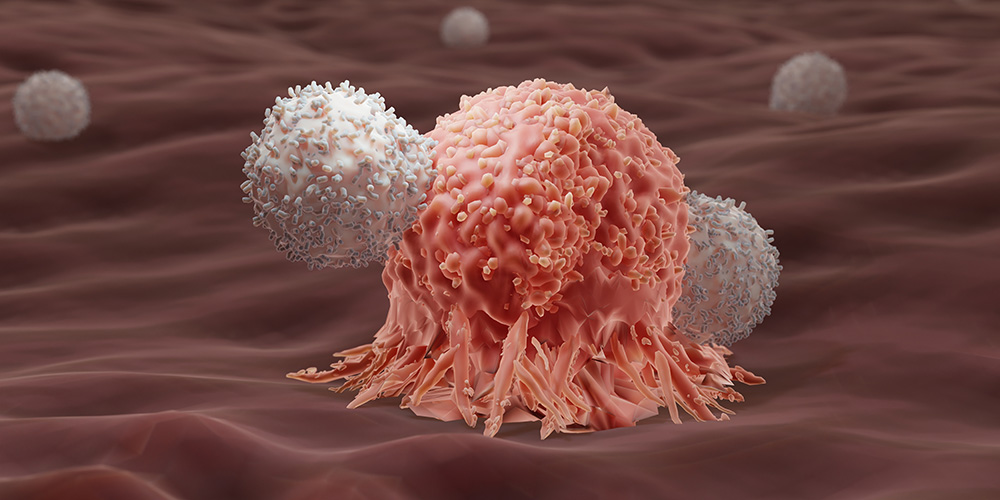How immune cells recognize the abnormal metabolism of cancer cells
When cells become tumor cells, their metabolism changes fundamentally. Researchers at the University of Basel and the University Hospital Basel have now demonstrated that this change leaves traces that could provide targets for cancer immunotherapies.
21 May 2024 | Angelika Jacobs
Cancer cells function in turbo mode: Their metabolism is programmed for rapid proliferation, whereby their genetic material is also constantly copied and translated into proteins. As researchers led by Professor Gennaro De Libero from the University of Basel and the University Hospital Basel now report, this turbo metabolism leaves traces on the surface of tumor cells that can be read by specific immune cells. The research team's findings have been published in the journal Science Immunology.
The immunologists working with De Libero discovered the immune cells in question, known as MR1T cells, around ten years ago. This previously unknown type of T cell can attack and eliminate tumor cells. Since then, the team has been researching these cells as a potential tool for novel immunotherapies against a variety of different types of cancer.
Modified DNA and RNA building blocks
The team has now been able to decipher exactly how the T cells recognize the degenerated cells: The altered metabolism of the cancer cells produces a certain type of molecule that appears on the surface of these degenerated cells. “These molecules are chemically modified DNA and RNA building blocks that are the result of changes in three important metabolic pathways,” explains De Libero.
“The fact that cancer cells have a profoundly altered metabolism makes them recognizable to MR1T cells,” adds Dr. Lucia Mori, who was involved in the research. In previous work, the researchers had already discovered that these T cells recognize a surface protein found on all cells, known as MR1. It acts as the proverbial silver platter and presents metabolic products from inside the cell on the cell surface so that the immune system can then check to see whether the cell is healthy or not.
“Several metabolic pathways are altered in cancer cells. This produces particularly suspicious metabolic products and thus alert the MR1T cells,” explains Dr. Alessandro Vacchini, the study's first author.
As a next step, the researchers intend to examine in more detail just how these telltale metabolites interact with the MR1T cells. The long-term vision: Within the framework of future therapies, a patient’s T cells could be reprogrammed and optimized to recognize and attack these cancer-typical molecules.
Original publication
Alessandro Vacchini et al.
Nucleobase adducts bind MR1 and stimulate MR1-restricted T cells
Science Immunology (2024), doi: 10.1126/sciimmunol.adn0126



